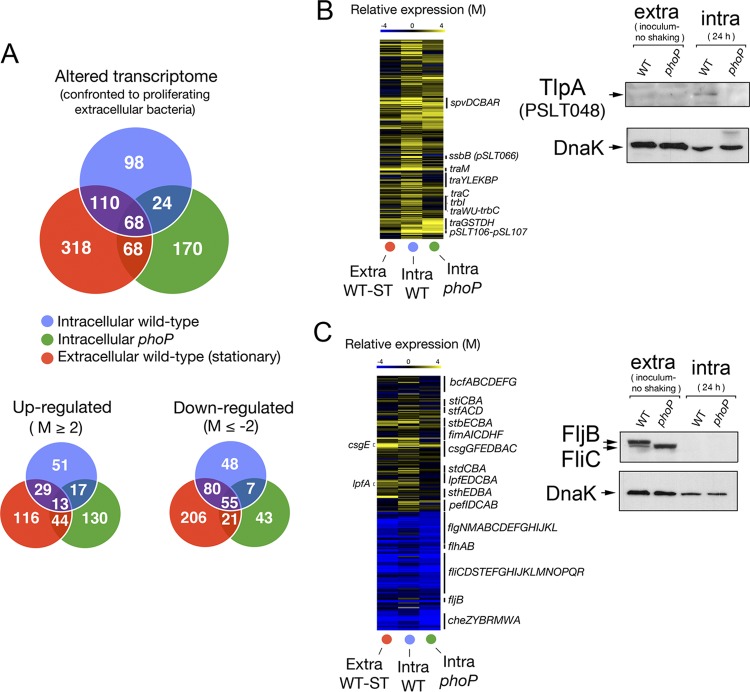Fig 2.
Genome-wide expression analyses reveal unique signatures in nongrowing intracellular wild-type S. Typhimurium. (A) Number of genes displaying expression changes higher than 4-fold (log2 = M value of ≤−2 or ≥2) in intracellular nongrowing bacteria (wild-type strain SV5015) or intracellular proliferating bacteria (phoP mutant strain MD1120) at 24 h postinfection of NRK-49F fibroblasts. A third sample, corresponding to extracellular bacteria grown overnight to stationary phase in LB medium in shaking conditions, was included for comparison. The three samples are referenced to the expression pattern displayed by actively growing extracellular bacteria grown in LB medium to an OD of 0.2 (exponential phase) (see the text for details). The number of genes that displayed up- and downregulation compared to bacteria grown to exponential phase are also indicated. (B) Heat map showing the upregulation in intracellular bacteria of genes mapping in the virulence plasmid pSLT. None that, relative to extracellular bacteria, pSLT plasmid genes are upregulated to a greater extent in nongrowing intracellular wild-type bacteria than in intracellular phoP mutant bacteria (also see Table S2 in the supplemental material). A representative case confirming this difference is shown for the TlpA (PSLT048) plasmid protein. (C) Heat map showing the expression changes of gene clusters encoding distinct fimbriae or flagellar proteins. Note the downregulation in the expression of flagellar and chemotaxis genes in intracellular wild-type and mutant bacteria (both wild-type and phoP mutant strains) (see Table S2). A Western assay demonstrating the marked drop in flagellin (FliC/FljB) relative levels in intracellular bacteria is shown.

